In the realm of forex trading, the ability to navigate market volatility is a pivotal skill that can make or break an investor's success. Understanding the intricacies of volatility indicators is not just a matter of theory; it directly impacts practical trading decisions.
From the ATR Strategy to the RVI Signal Utilization, each of the seven strategies outlined in this article offers a unique approach to capitalizing on market volatility. These strategies are not just theoretical concepts but actionable methods that can potentially revolutionize one's trading performance.
ATR Strategy Explained
In understanding market volatility and making informed trading decisions, a key strategy that traders often employ is the Average True Range (ATR) indicator. The ATR measures price volatility over a specific period, providing insights into the potential range of price movement. A higher ATR value signifies greater volatility, indicating larger price fluctuations, while a lower value suggests more stability and smaller price movements.
Traders use the ATR to adjust their strategies accordingly. For instance, in periods of high volatility (indicated by a higher ATR value), traders may widen their stop-loss orders to accommodate larger price swings and manage risk effectively. Conversely, during low volatility phases (associated with a lower ATR value), traders might opt for tighter stop-loss orders to protect their positions from sudden price reversals. Additionally, the ATR helps traders determine optimal position sizes based on the current market conditions, facilitating better risk management and informed trading decisions.
VIX Trading Approach
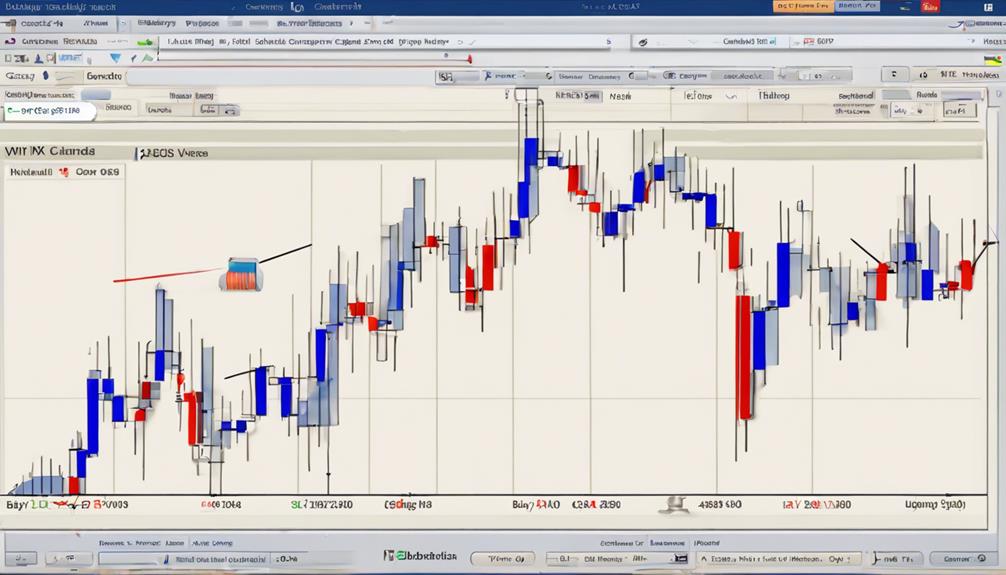
After comprehending the Average True Range (ATR) strategy as a tool for managing market volatility, traders can further enhance their trading decisions by incorporating a VIX Trading Approach.
The VIX, known as the Cboe Volatility Index, is a significant market volatility indicator that specifically measures implied volatility in the S&P 500 Index options. Values exceeding 30 on the VIX typically signal high market volatility, while lower values indicate a more stable market environment.
Traders actively use the VIX to anticipate potential market trends and adjust their strategies accordingly. Additionally, VIX options and derivatives are popular trading instruments that are closely tied to the VIX values, providing traders with opportunities to hedge against or speculate on market volatility.
Understanding and utilizing the VIX in trading can offer valuable insights into market sentiment, enabling traders to make well-informed decisions and navigate market trends effectively through data-driven market analysis.
Keltner Channel Method
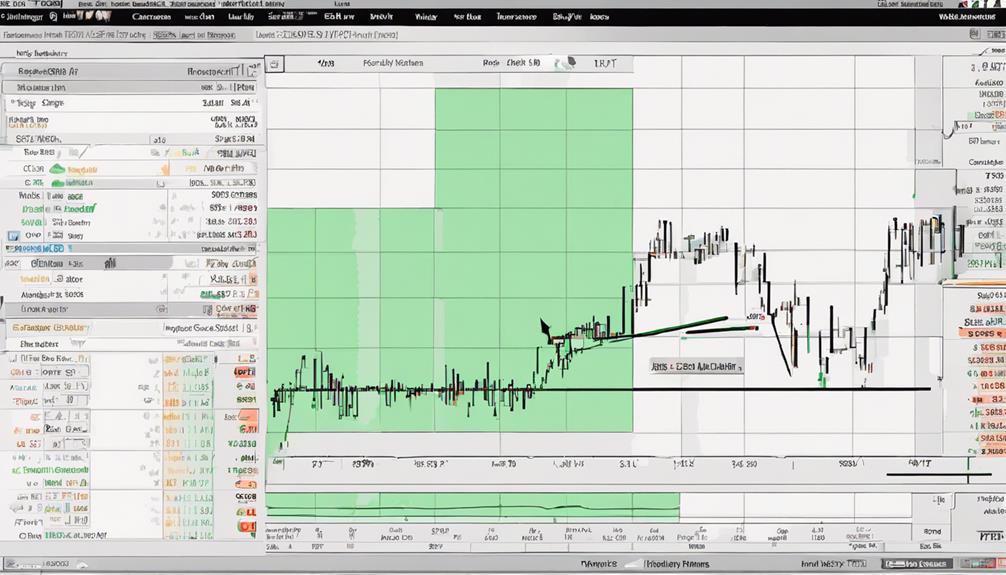
Utilizing the Keltner Channel method involves employing three lines to assess price volatility within currency pairs, facilitating traders in identifying market trends and potential breakouts efficiently. The method plots bands around an Exponential Moving Average, allowing traders to gauge market volatility based on the width of these bands.
Here are key points about the Keltner Channel method:
- Identification of High or Low Volatility: Traders can utilize the width of the bands to determine periods of high or low volatility within the market.
- Spotting Trends and Breakouts: By analyzing the position of the price in relation to the channel lines, traders can identify trends and anticipate potential breakout points.
- Automatic Calculation on Trading Platforms: The Keltner Channel method is available for automatic calculation on various trading platforms, streamlining the process for traders and providing real-time insights into price volatility within currency pairs.
Donchian Channel Technique
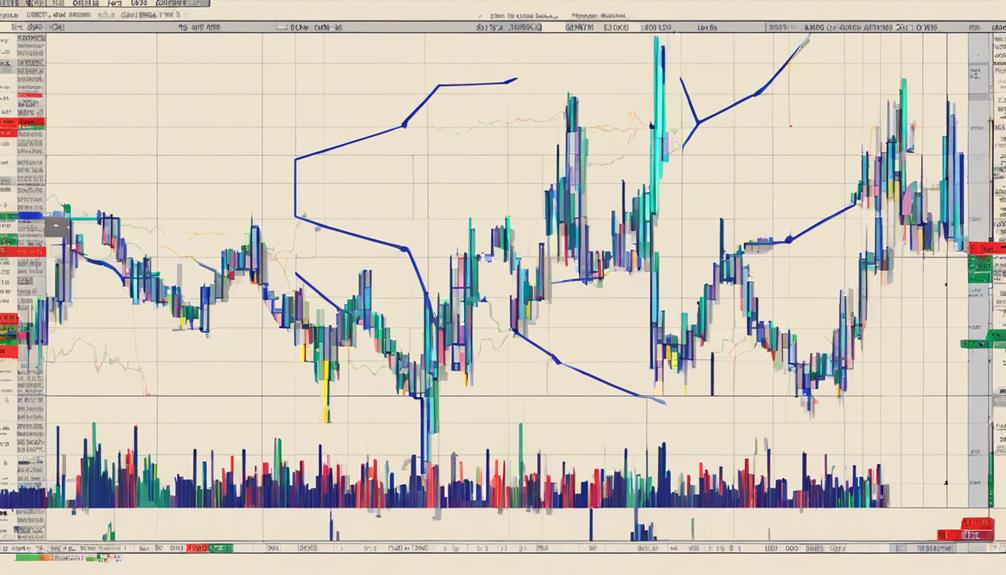
The Donchian Channel Technique provides traders with valuable signals for potential channel breakouts. By utilizing this method, traders can effectively determine optimal entry and exit points in the market.
Analyzing the widening or narrowing of Donchian Channels is key to understanding shifts in market volatility.
Channel Breakout Signals
How does the Donchian Channel technique assist traders in identifying breakouts and trend reversals based on market volatility?
- The Donchian Channel technique utilizes three lines to measure market volatility and identify breakouts effectively.
- Traders can spot potential trend reversals by analyzing the width of the channel created by the Donchian Channel.
- This method helps traders determine entry and exit points based on the channel width, allowing them to navigate volatile market conditions and capture price movements efficiently.
Setting Entry and Exit
When implementing the Donchian Channel technique for setting entry and exit points, traders rely on breakout strategies determined by channel highs and lows.
This technique assists in setting entry points when prices break above the channel high, allowing traders to capture strong market movements.
Additionally, the Donchian channel technique can help identify potential trend reversals by observing price behavior around the channel boundaries.
Setting exit points is equally crucial, as traders determine exit points when prices break below the channel low, helping to avoid false breakouts and potential losses.
Chaikin Volatility Strategy
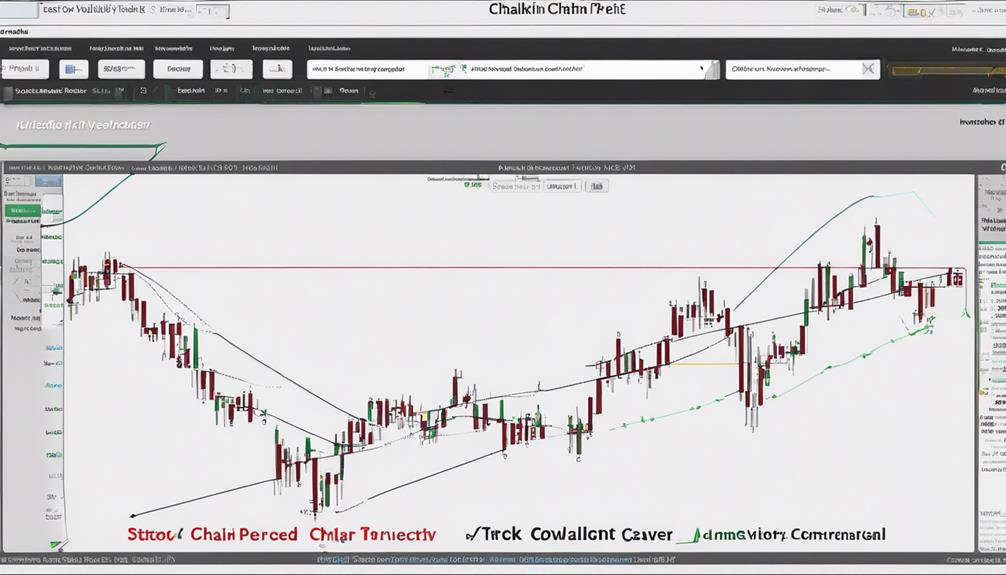
The Chaikin Volatility Strategy focuses on utilizing the Chaikin Volatility indicator to calculate price range variations and volume fluctuations.
By implementing Chaikin signals, traders can pinpoint potential trends, reversals, and breakout points in the market.
This strategy allows for tailored adjustments across different time frames, aiding traders in making well-informed trading decisions.
Chaikin Volatility Calculation
Utilizing the Chaikin Volatility Indicator in market analysis provides traders with a quantitative measure of price volatility based on high and low price differentials over a specified period. The calculation involves comparing the current close price to the midpoint of the high-low range.
The Chaikin Volatility Strategy leverages this indicator to identify market trends, reversals, and potential breakouts effectively. Traders have the flexibility to adjust the look-back period of the indicator to align with their trading strategies. Understanding the Chaikin Volatility Calculation aids traders in gauging market volatility accurately, enabling them to make informed decisions promptly.
- Quantitative measure of price volatility.
- Comparison of close price to high-low range midpoint.
- Flexibility in adjusting the look-back period.
Implementing Chaikin Signals
Implementing the Chaikin Signals within the Chaikin Volatility Strategy involves leveraging the intersection of price range and volume data to enhance market trend identification and trading decision-making. By utilizing the Chaikin Volatility Indicator, traders can effectively spot potential reversals and changes in volatility levels, aiding in making informed trading decisions. Adjusting the indicator's time frame can align with different trading strategies.
This strategy also helps in identifying breakout opportunities and managing risks efficiently during volatile market conditions. Incorporating Chaikin Volatility signals enables traders to refine their entry and exit points, ultimately leading to more profitable trades. The synergy between price range, volume data, and the Chaikin Volatility Indicator enhances the overall trading approach, emphasizing precision and strategic decision-making.
Twiggs Volatility Approach
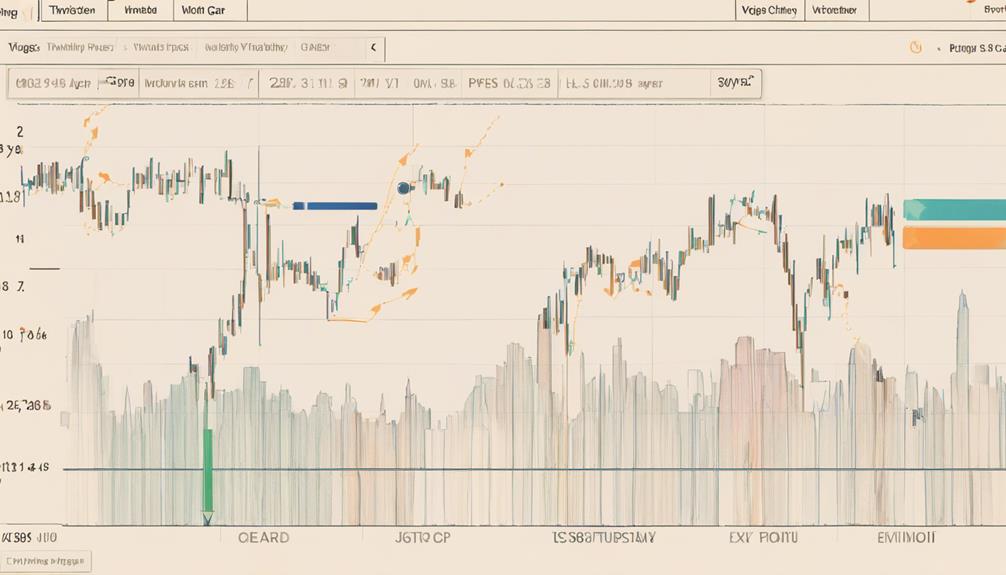
Developed by Colin Twiggs, the Twiggs Volatility Indicator is a powerful tool for measuring market risk changes through the calculation of the average true range (ATR) over a specified period. This indicator plays a crucial role in assessing volatility and aiding traders in making informed decisions.
Here are key aspects of the Twiggs Volatility Approach:
- Identification of Potential Market Reversals: By analyzing volatility levels, traders can anticipate possible market reversals, enabling them to adjust their positions accordingly.
- Recognition of Breakouts: The Twiggs Volatility Indicator helps in spotting breakout opportunities, where sudden price movements may indicate new trends or significant market shifts.
- Enhanced Risk Management: Providing a visual representation of volatility, this indicator assists in effective risk management strategies, allowing traders to set appropriate stop-loss levels and manage their exposure prudently.
The Twiggs Volatility Approach equips traders with valuable insights into market dynamics, empowering them to refine their trading strategies and navigate changing market conditions adeptly.
RVI Signal Utilization
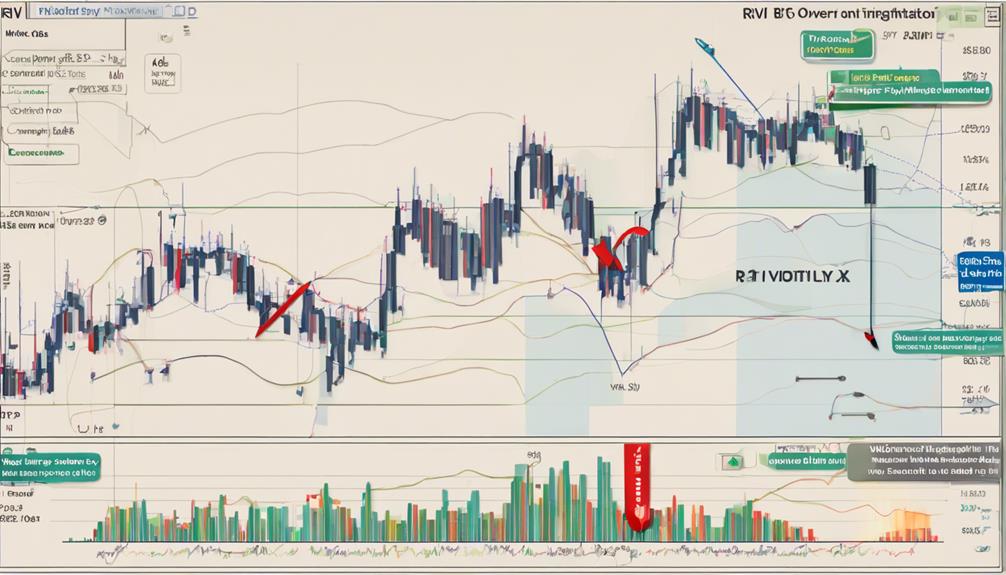
The application of the Relative Volatility Index (RVI) in trading strategies offers traders a nuanced perspective on market dynamics and aids in making well-informed decisions. RVI, measuring the direction and strength of a security on a scale of zero to 100, is a valuable tool in analyzing volatility indicators.
By assessing standard deviation, the RVI identifies overbought and oversold zones, assisting traders in determining entry and exit decisions. The RVI's oscillation between -100 to +100, based on positive and negative price changes, indicates uptrend or downtrend momentum, providing crucial insights for market analysis.
Understanding the RVI can significantly enhance a trader's ability to time entry and exit points effectively, improving overall trading strategies. By incorporating the RVI into a comprehensive technical analysis toolkit, traders can gain a competitive edge in navigating the complexities of the financial markets.
What Are the Most Effective Strategies for Using Volatility Indicators?
When trading stocks, it’s crucial to interpret volatility indicators efficiently to make informed decisions. Some of the most effective strategies for using volatility indicators include setting realistic stop-loss orders, identifying potential breakouts, and adjusting position sizes based on market volatility. Staying mindful of these indicators can help traders navigate unpredictable market conditions.
Frequently Asked Questions
What Is the Best Strategy for Volatility Index?
Utilizing the Volatility Index (VIX) as a leading indicator of market sentiment and expected volatility levels is a key strategy. Pairing VIX with technical analysis aids in trend confirmation and pinpointing market entry/exit points.
What Is the Best Indicator for Volatility?
The best indicator for volatility is the Average True Range (ATR). It effectively measures market volatility by considering price ranges. ATR offers valuable insights into potential price movements, assisting traders in making informed decisions based on current market conditions.
What Is the Best Options Strategy for Volatility?
To effectively navigate market volatility, consider employing the long straddle options strategy for potential gains in any price movement. For range-bound markets, the iron condor strategy can be beneficial, while the strangle strategy offers opportunities in significant price shifts.
What Is the Best Way to Measure Volatility?
Utilizing indicators such as Average True Range (ATR), Bollinger Bands, Volatility Index (VIX), Keltner Channels, and Donchian Channels offers a comprehensive approach to measuring volatility. These tools provide valuable insights for traders to assess market dynamics effectively.
Conclusion
In the world of forex trading, volatility indicators serve as a compass, guiding traders through the turbulent seas of market fluctuations.
By implementing strategies like the ATR approach, VIX trading method, and utilizing indicators such as the Keltner Channel and Donchian Channel, traders can navigate the shifting tides with insight and precision.
These tools act as beacons, illuminating the path to informed decision-making and enhanced trading performance in the ever-changing landscape of market volatility.
